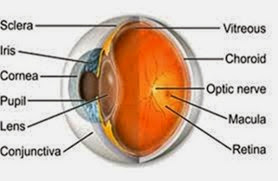farsightedness See HYPEROPIA.
flashes Visual phantoms that appear as spots of light. An ophthalmologist should evaluate occurrences of flashes, as they can be symptoms of RETI- NAL DETACHMENT or other conditions affecting the RETINA. Flashes represent stimulation of the rods and cones, the cells of vision carpeting the retina, that occurs when the gelatinous fluid holding the retina in place (vitreous humor) moves across them. Because the NERVE signals these cells send to the BRAIN encode patterns of light, the brain interprets messages from them as light. A blow to the head that causes a person to “see stars” has similar effect when it is forceful enough to jostle the vitreous humor against the retina. Flashes may appear as multiple spots of light, “light showers,” or lightning-like streaks.
The ophthalmologist typically performs a full OPHTHALMIC EXAMINATION to assess the integrity of the retina. Prompt treatment is necessary to intervene with a retinal tear or retinal detachment, to preserve vision. Isolated flashes of light generally are harmless and may occur for various reasons. Lines or waves of light that last 20 to 60 minutes are common with migraine headaches and have no significance for vision or the health of the eye.
See also FLOATERS; HEADACHE; VISION IMPAIRMENT; VITREOUS DETACHMENT.
floaters Fragments of inner EYE material that float through the vitreous humor, casting shadows against the RETINA as entering light strikes them.
Floaters may take various shapes and sizes, and typically move around the VISUAL FIELD, changing position with blinking or eye movement. Most floaters are harmless, though large floaters may interfere with vision. Holding the eye still may allow the floater to settle to the bottom of the eye, out of the visual field. A sudden increase in the number of floaters, or floaters that occur in combination with FLASHES, can signal a retinal tear or RETINAL DETACHMENT. Prompt intervention is necessary to prevent further retinal damage and pre- serve vision. Floaters may also indicate UVEITIS. Large floaters may remain indefinitely; small floaters may eventually break apart and become absorbed into the vitreous humor. There is no treatment for floaters.
See also VISION IMPAIRMENT; VITREOUS DETACHMENT.
fluorescein staining A simple procedure for diagnosing CORNEAL INJURY or foreign objects in the EYE. The ophthalmologist places a strip of paper containing fluorescein at the edge of the eye. The dye rapidly leaches into the tears. Some people experience a slight burning sensation when the dye washes across the eye for the first time. Blinking disperses the tears across the CORNEA. With the regular room lights turned off, the ophthalmologist shines a cobalt blue light on the eye. Any breach in the eye’s surface shows as bright green. The tears wash the fluorescein from the eye within a few minutes.
See also OPHTHALMIC EXAMINATION; SLIT LAMP EXAMINATION; TRAUMA TO THE EYE.

